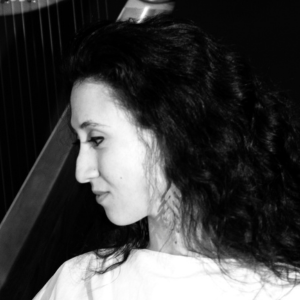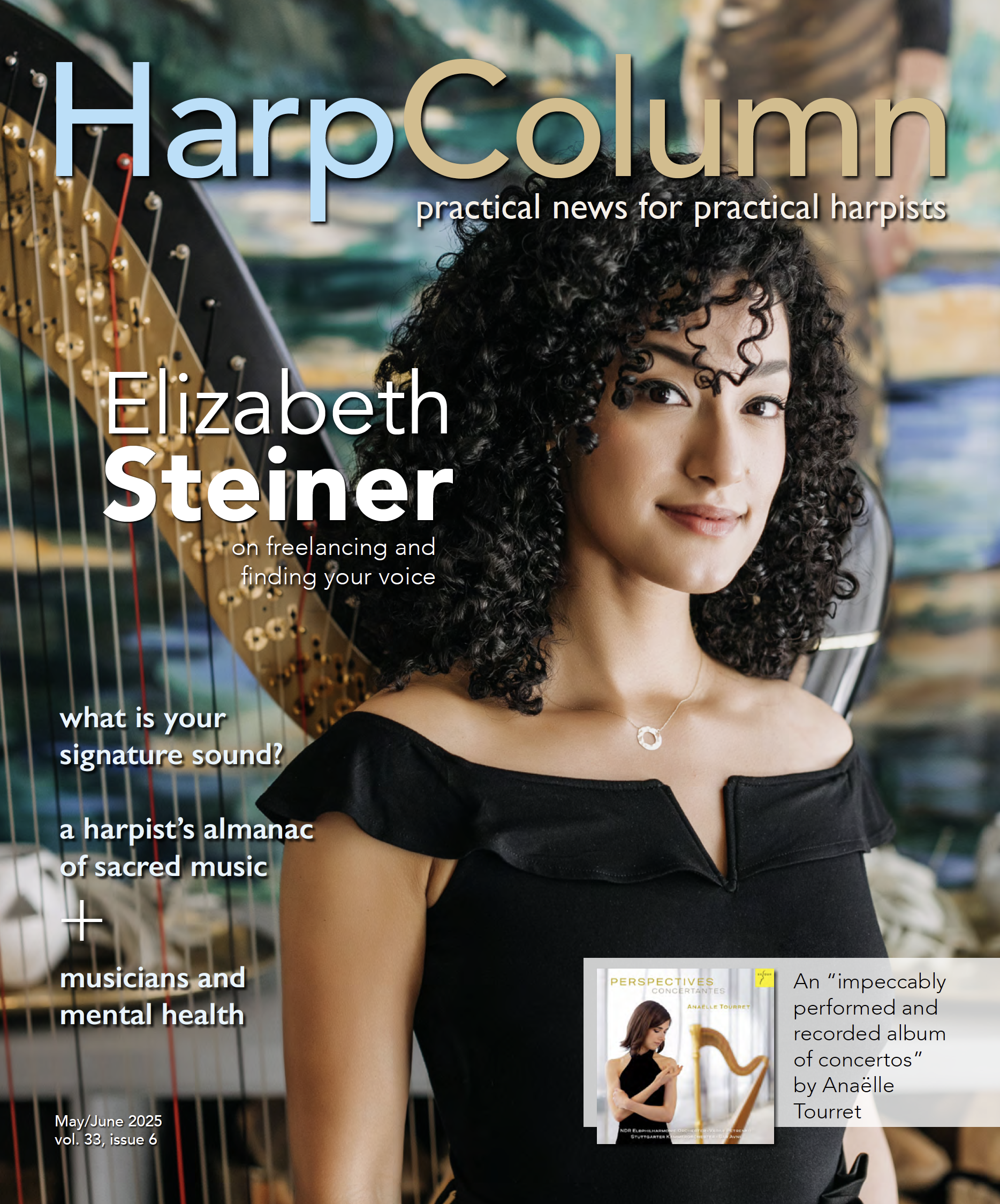
This question combines many interlinked considerations: articulation, balanced tone quality, a supple and relaxed technique, independent and dexterous fingers, and spatial and harmonic awareness.
For smoothness, I aim to articulate each finger equally and fully, while ensuring that my hand is supple and relaxed. I tend to warm the middle of the arpeggio by employing crescendo-diminuendo shaping, and I carefully listen to the quality of my thumb so that it blends with the tone of the other fingers.
I like to break down an arpeggio pattern to work on the evenness of two notes, then three notes, four notes, and so on. Smooth and even arpeggios depend much on the independence and strength of the individual fingers, and there are many great four-finger exercises to build this independence. I was introduced to the “daily exercises” in Henriette Renié’s Complete Method for Harp (pg. 189–194)by my teacher, Susann McDonald, and they are still part of my regular warm-up routine. These exercises include all the arpeggio inversions, and the cross rhythms develop further independence between the hands.
As arpeggio patterns are very present in our repertoire, we need to be able to quickly place the finger patterns in all inversions across the full range of the harp. When practicing, I consider the final tempo and the quality of the articulation, so for an arpeggio that is fast at final tempo, I utilize a short and fast articulation even when practicing slowly.
Finally, there are some wonderful incremental arpeggio studies in two resources that I use regularly in my teaching: The Irish Harp Book by Sheila Larchet Cuthbert and Trinity College London’s Harp Studies and Exercises.

When breaking down what factors create a fluid and even arpeggio, either in one hand or split between the two, the first step is to solidify the shape (physical notes and intervals) of the arpeggio itself and to address any placement issues that arise. One common example of how arpeggios end up choppy or uneven is sometimes referred to as “spidering on” to the strings, meaning that one finger places at a time instead of together as a unit.
Try practicing landing (no playing yet!) your fingers on the shapes before moving on to playing them as blocked chords, as you again observe the placements. This technique helps to create a mental road map and familiarize yourself with the placements. It’s essential that the muscle memory of these shapes have time to assimilate before you begin practice that is focused towards achieving evenness and a faster tempo.
To then further polish your arpeggios, concentrate on the individual fingers and utilize finger independence exercises, especially ones that accent certain fingers. Try placing your entire arpeggio and playing each fourth finger fortissimo while the other fingers are piano and continue this pattern with third finger, second finger, and then thumb.
Lastly, remember that mastering it slowly is the key to playing it fast! Do not rush to play it up to tempo! Work on each hand until it feels comfortable and strong.

Six steps for starting at the beginning with one-hand ascending and descending arpeggios are:
Plan: Have the desired sound of each note in your head before you begin. Plan to listen to every note, evaluating articulation, tone quality, rhythmic evenness, the dynamic of each note, and the intended musical shape of the arpeggio.
Prepare: Shape your hand as it moves to the strings, so your fingers arrive on the correct strings in their optimal positions for flexible and fluid playing.
Place: With the hand still in the desired performance shape, place the fingers silently, holding no tension in shoulders, arms, hands, and individual fingers. Practice the placement without playing, looking at the exact points on the strings where you wish to place your fingers. Next, practice that placement with eyes closed allowing you to “land” with ease and confidence (never having to adjust your finger placement on the strings) and enabling your elbow to have freedom of movement to lead the arm and hand for easy finger crossings as the arpeggio continues. Practice “placement games”—leapfrog landings, as well as crossings, to and from thumbs for simultaneous, exact placement of 2-3-4 in their next playing positions.
Push (and release!): With all fingers on the strings, practice pushing and releasing each string with each individual finger, and then in sequence with each adjacent finger, encouraging evenness in tone and time to become automatic.
Play confidently, listening and evaluating each sound for improvement. Practice “performance games,” playing arpeggio notes in different rhythm groups and with accents on different fingers.
Pace your increase in speed so that neither tension nor extra motion ever impedes your elegant and thoughtful performance of arpeggios. •
—Carol McClure, Artistic Director of The Harp School, Inc., is a harp pedagogue, solo performer, recording harpist, and competition/audition preparation specialist.
Burns, Tennessee





